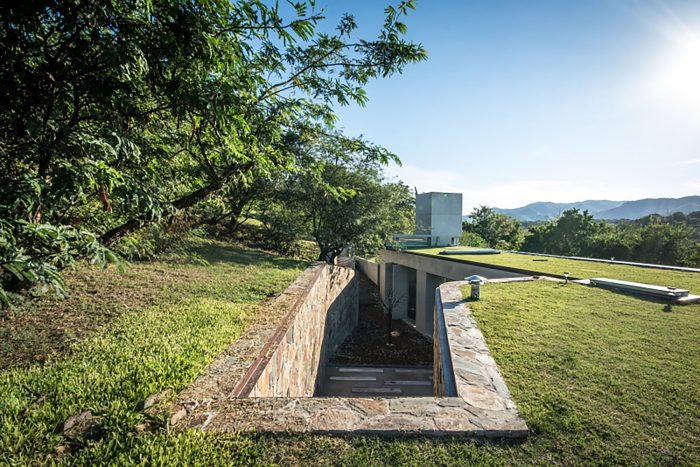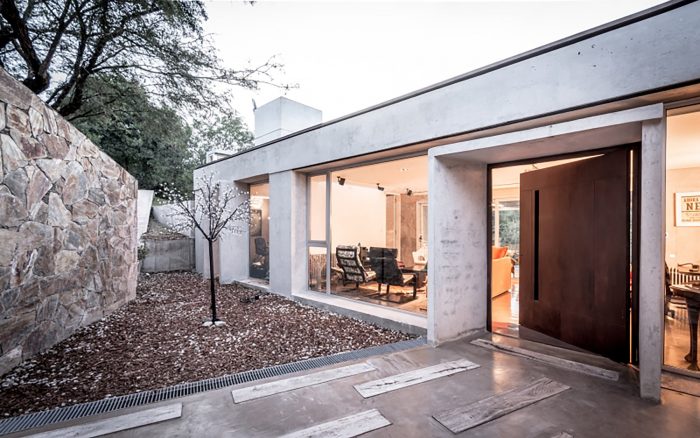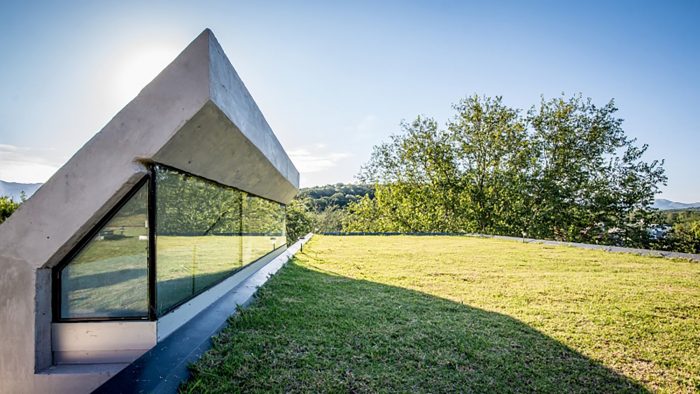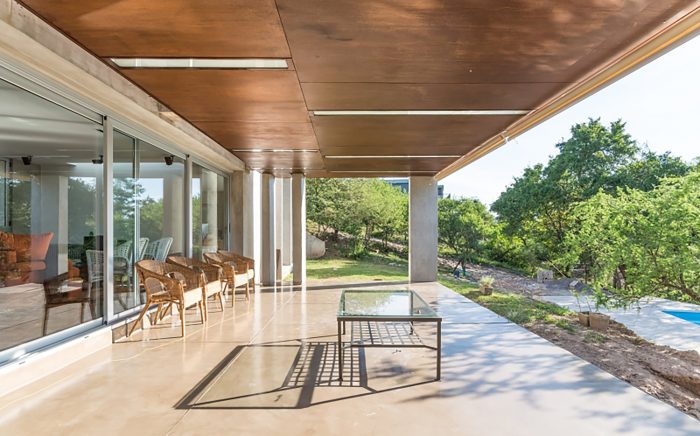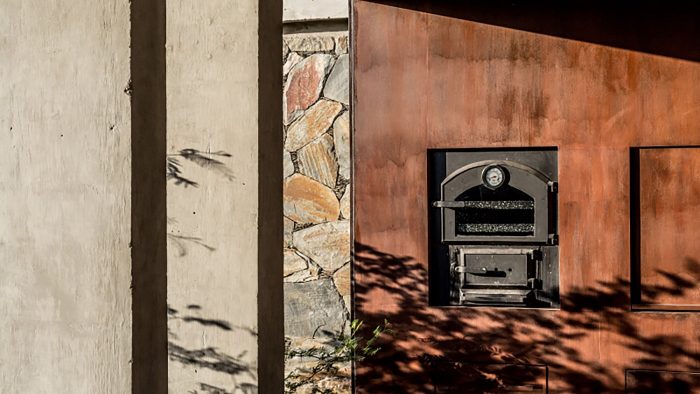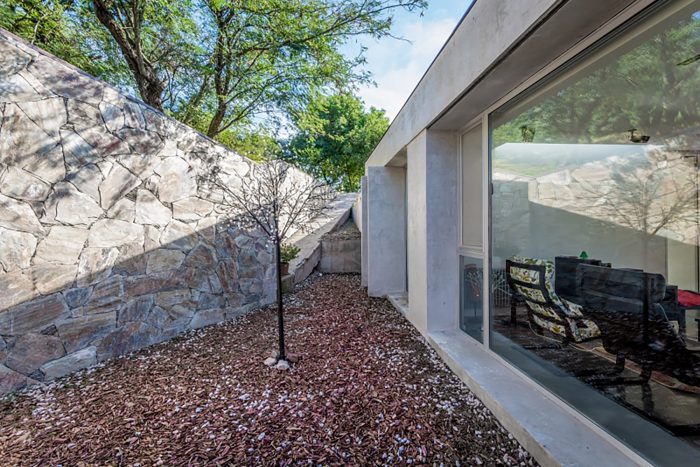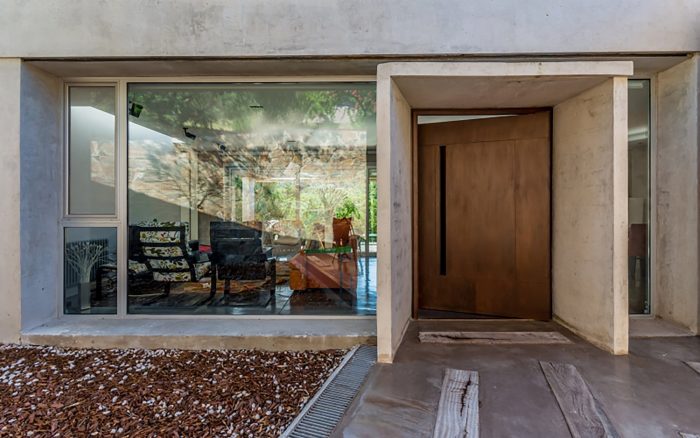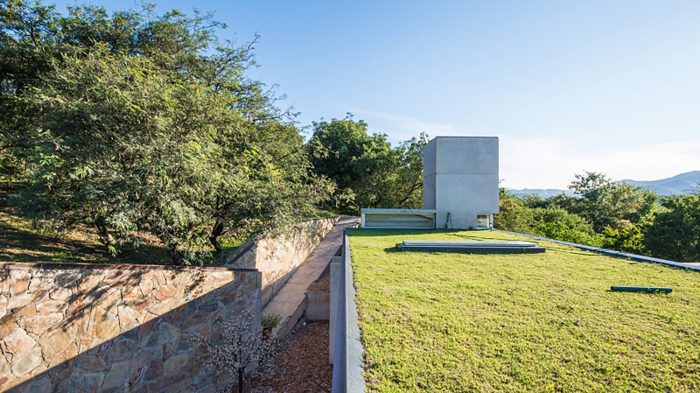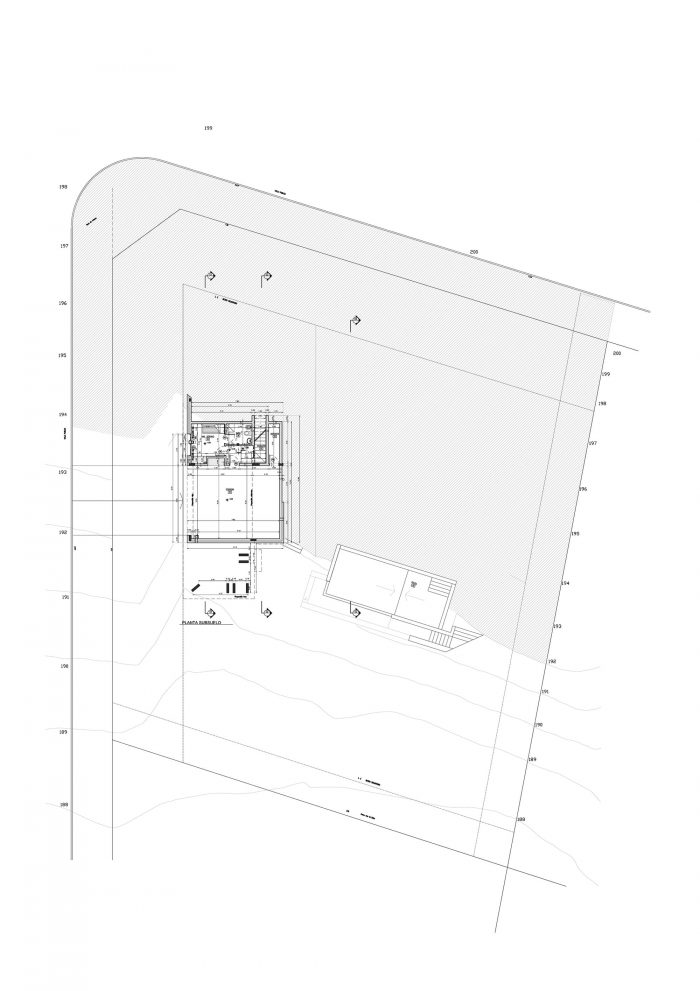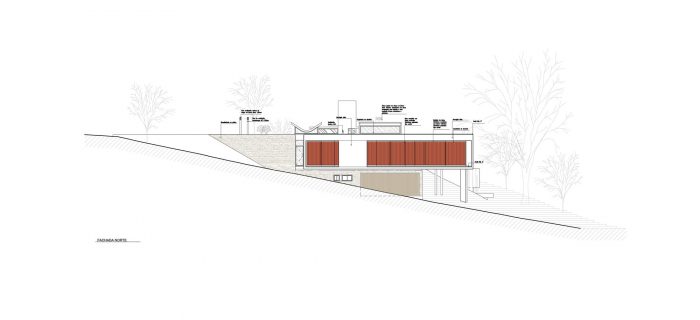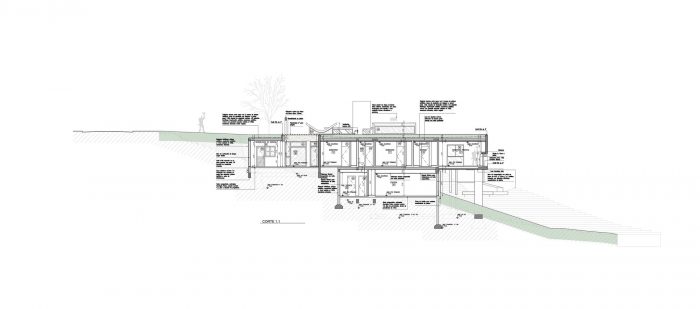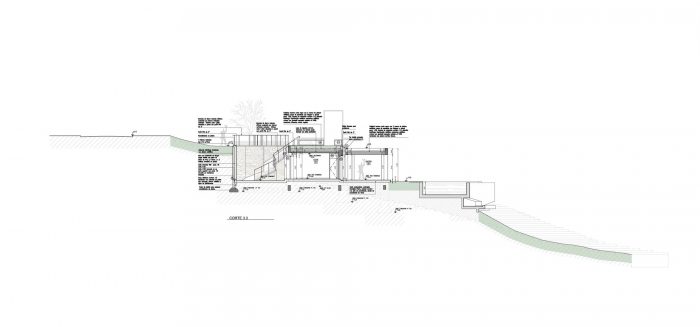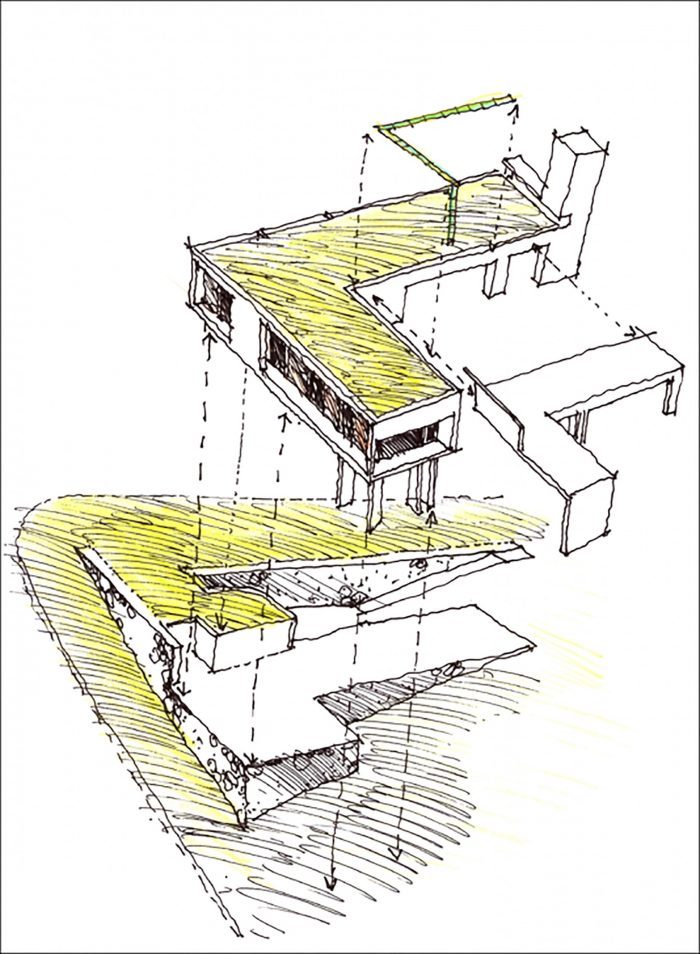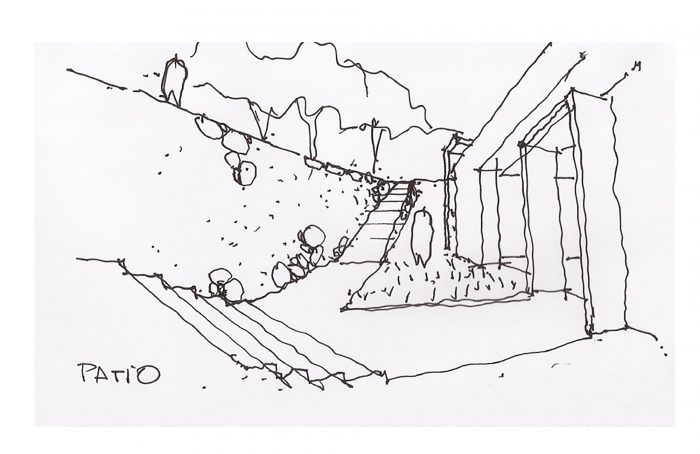这个房子的功能方案是非常常规的。
一楼有3间卧室,主卧室有更衣室和私人浴室,其他卧室有共用浴室;它还包括一个宽敞的厨房,有一个专门的早餐场所,都可以看到院子,还有一个与画廊相连的餐厅和客厅。
The functional program for this house is pretty conventional.
On the ground floor the are 3 bedrooms, the main one with dressing room and a private bathroom , and the other ones with a shared bathroom; it also includes a spacious kitchen with a special place for breakfast, both with visual to the courtyard, and a dinning and sitting room integrated with the gallery.
客户表示有必要在房子里有一个工作空间,所以它远离私人区域,与起居室相连。在底土上开发了一个双车库和一个带有浴室的服务室。这个家庭特别关注起居室和画廊(为可能的活动而合并)、主卧室和厨房,这就是为什么他们被赋予更广泛的尺寸,最好的视觉效果和交叉通风。
The client expressed the necessity of having a working space inside the house, so it was made far from the private zone and it is connected with the sitting room. On the subsoil it was developed a double garage and a service room with an included bathroom. The family was specially concerned about the sitting room and the gallery (merged for possible events) the main bedroom and the kitchen, that’s why they were given broader dimensions, the best visuals and cross-ventilation.
该项目是由土地的地形决定的。它位于一个角落,有1700平方米,坡度为15米。它被嵌入到一个非常崎岖的地形中,所以它产生了多种视觉效果,可以看到山谷或其他有大量植被的山丘。由于它是一个角落的土地,它提供了从侧面坡度或向上然后向下进入的可能性。我们检查了很多备选方案,如果从顶部进入,虽然房子有三层,但与上级街道的水平相比仍然较低;如果从斜坡一侧进入,许多复杂的楼层会使内部空间变得支离破碎。
The project is defined by the topography of the land. It´s located in a corner, with 1700 m2 and a grade of 15 mts. It is embedded in a very rugged terrene, so it generates multiple visuals either to the valley or to other hills with the presence of lots of vegetation. As it is a corner land, it gives the possibility of accessing by a side slope or up and then down. Lots of alternatives were checked, if the access was by the top, although the house had 3 floors, it remain lower compared to the level of the superior street; if the access was by the slope side, many complications of the floor would make fragmented spaces in the interior.
最后,我们坚持从顶部生成通道,所以出现了一个绿色露台的想法,有一个轴,你可以通过它进入房子。通过这种方式,我们取消了入口规模和景观的巨大之间的竞争,使房子消失,给人的感觉是地面继续,与自然融合。
Finally, we insisted on generating the access by the top, so it appeared the idea of making a green terrace with a shaft through which you access the house. By this way we annulled the competition between the entry scale and the immensity of the landscape, making the house disappear and giving the feeling that the ground continues and blends with nature.
让地面继续下去的事实,作为一种天气保护,防止南方的侵略。
The fact of letting the ground continue, works as a weather protection from the south aggression.
太多的物体解决了这个功能图。其中一个是由石头制成的基座,似乎来自山上,它被主要的基座支撑着,它是由钢筋混凝土制成的L形,更加人工化和几何化。
Too objects resolve the functional diagram. One of them is a basebord made of stone, which seems to come from the hill, and it is supported by the main one, wich is more artificial and geometric, made of reinforced concrete in a form of L.
这种几何形状在两条街道之间产生了一个限制,并创造了一个包含游泳池的院子。
This geometry generates a limit between both streets and creates a yard which contains the pool.
这些物体的质量差异也是由方向决定的。朝向街道的那个更外向,因为它朝向北方,而朝向南方的那个是气候屏障,服务和画廊(西部)被安置在那里。
The qualitative difference of these objects is also given by the orientation. The one looking to the street is more extroverted as it faces the north, and the one facing south is the climatic barrier where the services and the gallery (west) are housed.
此外,在所有的空间中使用来自上方的照明,不仅增强了它们,而且减少了白天的人工照明。每个天窗都使用不同的照明理念的方向。它可以是间接的,也可以根据时间和方向形成线条。这座房子通过Splits进行中央空调和制冷,其冷凝装置将位于餐厅旁边的院子里。
Also, the using of lighting from above in all spaces, not also enhances them but reduces the artificial lights use during the day. Each skylight uses an orientation with a different idea of lighting. It could either be indirect or forming lines according the hours and orientations. The house has central hitting and refrigeration through Splits, whose condensing units will be located in the courtyard next to the dinning room.
关于结构,决定将其发展为独立的,由钢筋混凝土制成。地基很深,因为表面和线状的挖掘会因为岩石地面而产生很大的冲突。柱子的布置是为了与支撑小板的平梁组成一个编织体。砖墙包围了房子的大部分,但在视觉开放的地方,从屋顶到地板都使用了玻璃表面。
Regarding the structure, it was decided to develop it as independient, made of reinforced concrete. The foundations are deep, as superficial and lineal excavations would be very conflictive because of the rocky ground. Columns were disposed in order to make a weave with flat beams that sustain little slabs. Brick walls enclosure most of the house, but in the places of visual opening, glass surfaces from roof to floor were used.
Architects: Santiago Viale
Area : 364 m²
Technical Direction : Daniella Beviglia
Collaborators : Ana Laura Aquilante, Sebastián Mantese, Sofía Ariño, Sabrina Molinero, Agustina Pezza, Florencia Ruiz, Mauricio Beacon, Mercedes Pazo
Structure : Germán Sarboraria
Air Conditioning : Ingeniería Global
City : Mendiolaza
Country : Argentina


